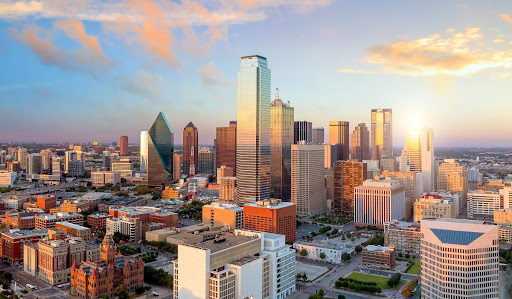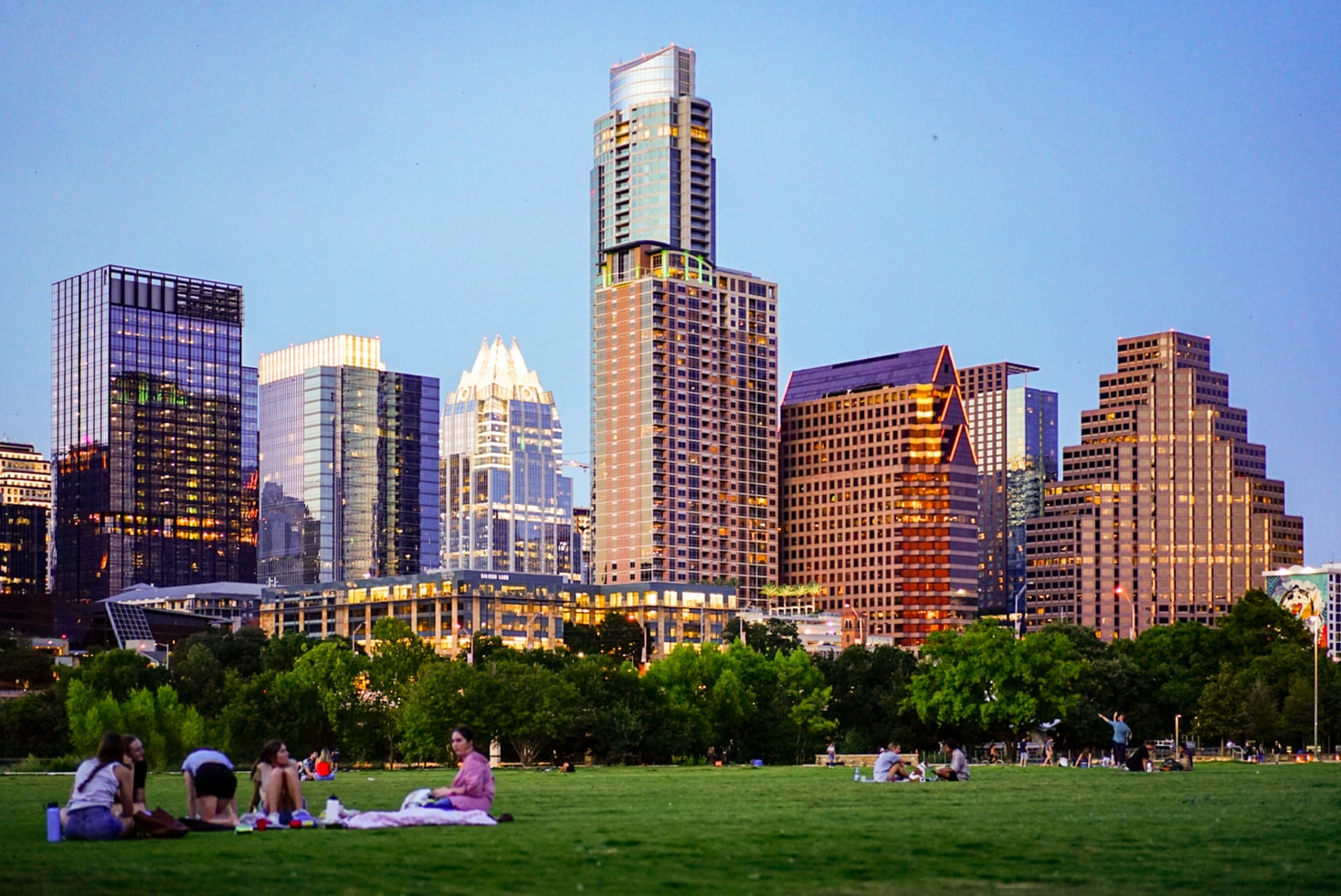Jump Ahead To:
When it comes to the Lone Star State, the cities of Dallas and Austin stand as beacons of Texan culture and lifestyle. While both cities have their own unique charm, they also have their fair share of differences that can greatly influence your decision on where to settle. From schools and transportation to jobs and economy, cost of living, entertainment, green spaces, and overall ambiance, let’s take a deep dive into the vibrant worlds of Dallas and Austin.
Schools: Nurturing the next generation
Education is the cornerstone of any thriving community, and both Dallas and Austin offer a range of educational opportunities. In Austin, the emphasis on creativity and individuality is tangible, with its renowned school districts like Eanes and Austin ISD often embracing innovative teaching methods. The city’s proximity to the University of Texas also fosters a college-town atmosphere that can be inspiring for families.
Dallas, on the other hand, boasts a multitude of highly-rated public and private schools, coupled with a strong emphasis on diversity and extracurricular activities. The Richardson ISD and Plano ISD are known for their rigorous academic programs, while the Highland Park ISD offers a prestigious education.
Learn more about Austin Schools and Dallas Schools.

Transportation: Navigating urban terrain
Austin’s compact size makes it relatively easy to get around, and the city is investing in expanding its public transit options. The Capital MetroRail and MetroBus systems are continuously evolving, making it easier for residents to explore the city without a car. That being said, Ausin traffic has become notorious over the past decade, as thousands of people flock to the city every year.
Dallas, with its sprawling layout, relies heavily on cars for daily commutes. However, the DART (Dallas Area Rapid Transit) system provides a network of light rail and buses that connect various parts of the city. While progress is being made, Dallas’ transportation system is still evolving to meet the needs of its diverse population.
Jobs and Economy: Opportunities abound
Both Dallas and Austin are economic powerhouses, though they have distinct industries that drive their economies. Dallas is known for its corporate landscape, boasting headquarters for several Fortune 500 companies. The city’s economy is diversified across sectors like finance, healthcare, technology, and manufacturing. The job market is competitive, offering a wide range of opportunities for professionals and people who are just starting their careers.
Austin is the technology hub of Texas and has been for several decades. Companies like Dell, IBM, AMD, Apple, Meta, Google, Microsoft and SpaceX, among many others, all have a presence here. A supportive business environment and collaborative culture make Austin a great city for tech startups. And Austin’s vibrant arts and music scene attract creatives from around the world, adding to its unique economic landscape.
Cost of Living: Balancing the budget
One of the most significant factors to consider when relocating is the cost of living. Austin’s popularity and influx of tech workers have contributed to a rising cost of living, especially in terms of housing. While it’s still generally far more affordable than other tech-centric cities like San Francisco, Austin is no longer an affordable city. The median sale price of a home in Austin is $605K, according to Redfin, and average rent for a one bedroom apartment is $1,819.
Dallas offers a more diverse range of housing options, from suburban neighborhoods to downtown high-rises. Median sale price of a home here is $455K, with a one bedroom apartment renting for an average of $1,362.
Housing costs vary widely, of course, depending on the neighborhood and other factors. Highland Park, Westover Hills and University Park are the most expensive neighborhoods in Dallas. Lake Highlands, Prestonwood and Double Oak are generally safe, affordable neighborhoods. In Austin, Barton Creek, Bryker Woods and Old West Austin are expensive, with Allandale, North University and Hutto ranking high for being affordable and safe neighborhoods.
Safety: Peace of mind
Dallas, like any major metropolitan area, has a complex safety landscape. While many parts of Dallas are safe and welcoming, some neighborhoods have higher crime rates, including property crimes and violent incidents. Areas like Uptown, Downtown, and certain suburban neighborhoods (see “Cost of Living” section above) tend to have lower crime rates and a strong police presence. However, certain pockets of South Dallas and East Dallas have historically experienced higher crime rates. I
Austin has garnered a reputation for its laid-back and inclusive vibe, and this extends to its safety record as well. Generally speaking, Austin boasts lower crime rates compared to many other major U.S. cities (again, see “Cost of Living” above, for specific areas that tend to be considered safe). Violent crime and property crime rates are relatively low, contributing to a sense of security for residents. The city’s commitment to community engagement and its efforts to foster positive police-community relations have contributed to its reputation as a safer place to live.
Learn more about crime and safety in Dallas, TX
Weather: Climate matters
Summers in Austin are characterized by hot temperatures that often climb above 90°F. Winters are mild, average temperatures from December to February range between 40°F to 60°F, with the occasional colder snap. While snow is rare, it’s not unheard of to witness a few flurries every few years.
Dallas summers are hot, humid and long, with temperatures often exceeding 90°F. Heatwaves can extend from May to September, making air conditioning a cherished companion. Average temperatures from December to February range between 37°F to 57°F. Snowfall in Dallas is relatively rare, if it does occur it’s a noteworthy event that often brings the city to a standstill.
So, if you thrive in warmer weather and enjoy outdoor activities, both cities offer ample opportunities to bask in the sun. If you prefer milder climates and are not a fan of high humidity, you might be happier in Austin.
Natural disasters are another consideration. Austin’s hilly terrain can lead to flash flooding during heavy rains, especially in low-lying areas. The Balcones Escarpment can cause rainwater to accumulate quickly, leading to potential flood risks. And central Texas, including Austin, is part of “Tornado Alley.” While tornadoes aren’t as common as they are in the northern parts of the state, they can still occur. Severe thunderstorms can bring high winds, hail, and occasionally tornadoes. The Hill Country’s arid climate and rugged landscape make it susceptible to wildfires, especially during periods of drought. Wildfires can pose a risk to both urban and rural areas.
Dallas faces its own set of natural disaster possibilities, some of which overlap with Austin’s risks. Like Austin, Dallas is also part of Tornado Alley. While tornadoes can strike anywhere in North Texas, the city’s large urban footprint means that densely populated areas can be affected. Dallas experiences its fair share of severe weather, including thunderstorms, lightning, and hail. High winds and hail damage to property are common during stormy seasons. Additionally, Dallas’ urban heat island effect can result in prolonged periods of high temperatures.
Entertainment: a cultural kaleidoscope
Austin’s live music scene is legendary, with venues like the Continental Club and the iconic South by Southwest (SXSW) festival drawing music enthusiasts from all over the world. The city’s laid-back vibe encourages exploration, whether it’s hiking around Barton Creek or strolling through the quirky shops on South Congress Avenue.In terms of entertainment, Austin is the clear winner here.
Dallas, as a larger metropolis, has its own charms as well though, boasting a diverse entertainment scene ranging from cultural museums and theaters to professional sports teams and upscale shopping. The Dallas Arts District is a cultural hub The city also has a vast arts district, with 18 blocks of museums, venues, and galleries, while neighborhoods like Deep Ellum offer a blend of art, music, and dining.
Also – Dallas has a great brewery scene, if that’s your thing.

Green Spaces: nature retreats
In Austin, the Barton Creek Greenbelt provides miles of trails for hiking, biking, and swimming. Lady Bird Lake offers kayaking and paddleboarding opportunities, allowing residents to escape the urban hustle. Barton Springs offers an affordably year-round spring-fed pool for Austin residents to use, offering a way to cool off – and fast- during Austin’s hot summers.
Dallas may surprise you with its expansive green spaces, including the beautiful Klyde Warren Park that bridges the gap between downtown and Uptown. The Dallas Arboretum and Botanical Garden is a haven of natural beauty, while White Rock Lake offers sailing and picnicking.
Dallas or Austin? Two great places to live
Texans are known for their warm hospitality, and both Dallas and Austin reflect this spirit. However, Austin’s proudly self-proclaimed reputation for being “weird” and its strong sense of community can foster a more relaxed and open atmosphere. Dallas, as a larger city, can sometimes feel busier, but its diverse population adds a cosmopolitan touch to the Texan friendliness. Techie music geek? Austin could be your best bet. Looking for a cosmopolitan city with corporate professional opportunities? Dallas could be a perfect place. You really can’t go wrong here, though. Both cities are wonderful places to live. Heck, they both made our list of Best Places to Live in Texas.
Whether you decide on Austin or Dallas, when you’re ready to make the move we’d love to help. We’re Bellhop, and we have local movers throughout Texas and across the nation who are ready to help make your move as stress-free as humanly possible. From long distance to local moves, full-service and special project hourly rates, storage services and last minute moves – we do it all.
Use our moving cost calculator to get a quick view of the approximate costs, or just go right ahead and book your Bellhop move. Questions? We have answers and we’re always happy to talk to you.
- Most Walkable Neighborhoods in Richmond - May 21, 2024
- Best Schools in Omaha, Nebraska: A Comprehensive Guide - May 9, 2024
- The Best Schools in Tucson, Arizona - April 5, 2024




